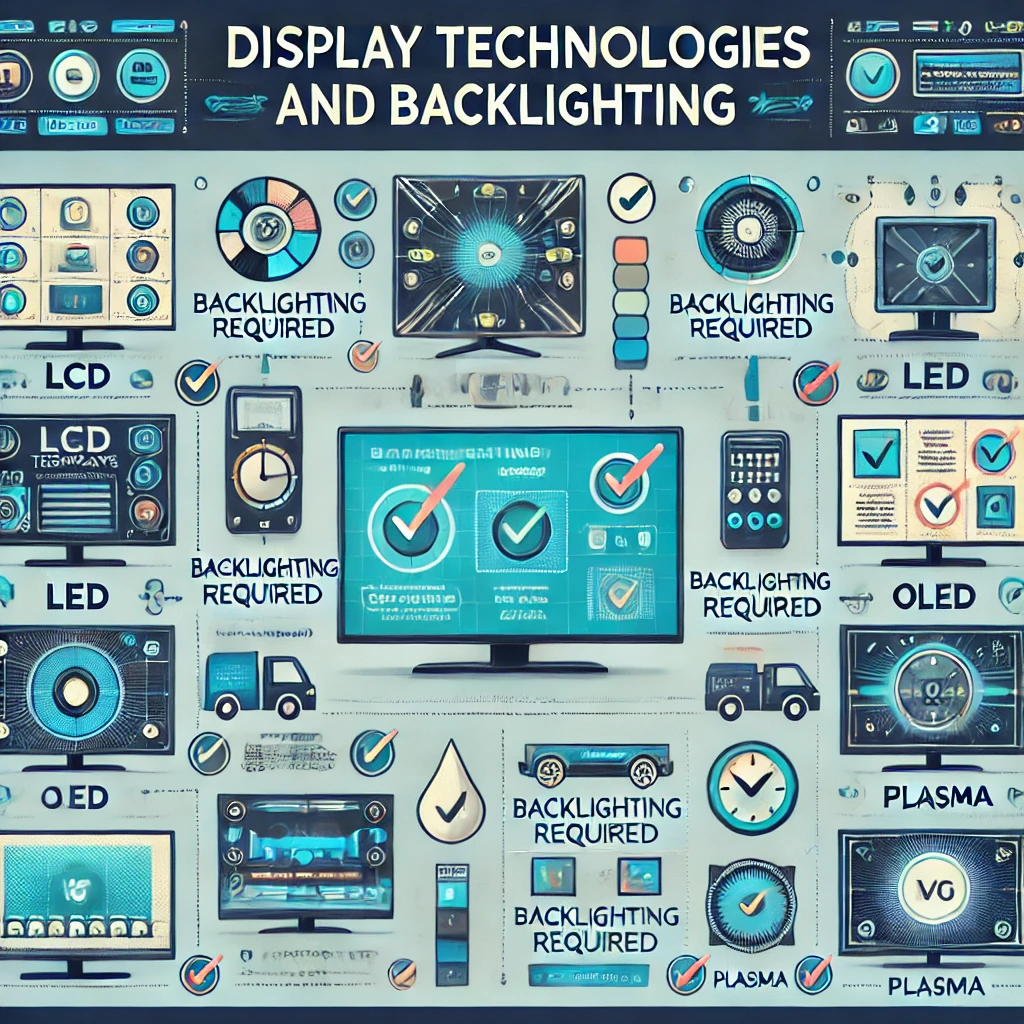Display technology has advanced significantly, offering various options with distinct characteristics. Backlighting is a crucial feature for certain display types, as it enables brightness and visibility in various lighting conditions. In this article, we’ll explore which display technologies require backlighting, explain how backlighting works, and discuss the benefits and applications of these displays.
Table of Contents
Understanding Backlighting in Displays
Backlighting is an illumination method used in display screens to make images visible. Unlike self-emissive displays, which produce their own light, certain display types rely on a light source behind the screen to function. This light source ensures that images and colors are vivid and clear, even in dim environments.
Why is Backlighting Important?
Backlighting enhances brightness, sharpness, and color accuracy. Without it, images would be dull and hard to see in darker settings. By providing a consistent light source, backlighting allows displays to deliver high-quality visuals that are easy on the eyes.
Display Technologies That Require Backlighting
Two common display technologies that require backlighting are LCD (Liquid Crystal Display) and LED-backlit LCDs. Let’s look at each in more detail.
1. Liquid Crystal Display (LCD)
LCD is a popular display technology used in devices such as monitors, televisions, and mobile phones. Unlike OLED or plasma displays, LCDs cannot emit light by themselves and therefore need an external light source to function.
How LCD Backlighting Works
LCD displays use a backlight, typically provided by LED (light-emitting diode) or CCFL (cold cathode fluorescent lamp) sources, to illuminate pixels. The backlight shines through liquid crystals, which adjust to create colors and images.
Advantages of LCD Backlighting
- High Brightness: LCD screens with backlighting offer bright displays, suitable for outdoor use and bright environments.
- Energy Efficient: Compared to older display types, LED-backlit LCDs use less energy.
- Affordable: LCD technology is widely used and generally more affordable than self-emissive displays.
2. LED-Backlit LCD
An LED-backlit LCD is a more advanced version of the traditional LCD. It uses LED lights instead of CCFL for backlighting, offering better brightness control, energy efficiency, and thinner displays.
How LED-Backlighting Enhances LCDs
LED-backlit LCDs feature a layer of LEDs behind the screen, which can be arranged in different ways (edge-lit or full-array) to control brightness. Full-array backlighting enables dimming in specific areas, enhancing contrast and delivering darker blacks.
Benefits of LED-Backlit LCDs
- Slim Design: LED backlighting allows for thinner displays, making it ideal for modern, slim televisions and monitors.
- Better Contrast: The ability to dim specific LED zones offers improved contrast and color accuracy.
- Longer Lifespan: LEDs have a longer lifespan and are more durable compared to CCFL backlights.
Comparing LCD and LED-Backlit LCD Displays
| Feature | LCD | LED-Backlit LCD |
|---|---|---|
| Backlighting | CCFL or LED | LED only |
| Brightness | Moderate | High |
| Contrast | Limited | Enhanced |
| Energy Efficiency | Good | Better |
| Design | Thicker (with CCFL) | Slimmer |
Applications of Backlit Displays
LCD and LED-backlit LCD displays are widely used in various devices due to their reliability and high-quality visuals. Here are some common applications:
- Televisions and Monitors: LED-backlit LCDs provide bright, clear images, making them ideal for home and office screens.
- Laptops and Mobile Devices: LCDs are energy-efficient and compact, perfect for portable devices.
- Digital Signage: Backlit displays are used in public spaces for their visibility and durability.
Conclusion: The Role of Backlighting in Display Quality
Backlighting is essential for LCD and LED-backlit LCD displays, as it allows these screens to deliver bright, vivid visuals in any lighting condition. While these technologies require external lighting sources, they remain popular due to their efficiency, affordability, and versatility. Understanding the role of backlighting can help consumers choose displays that best suit their needs, ensuring clear and vibrant visuals for both work and leisure.
